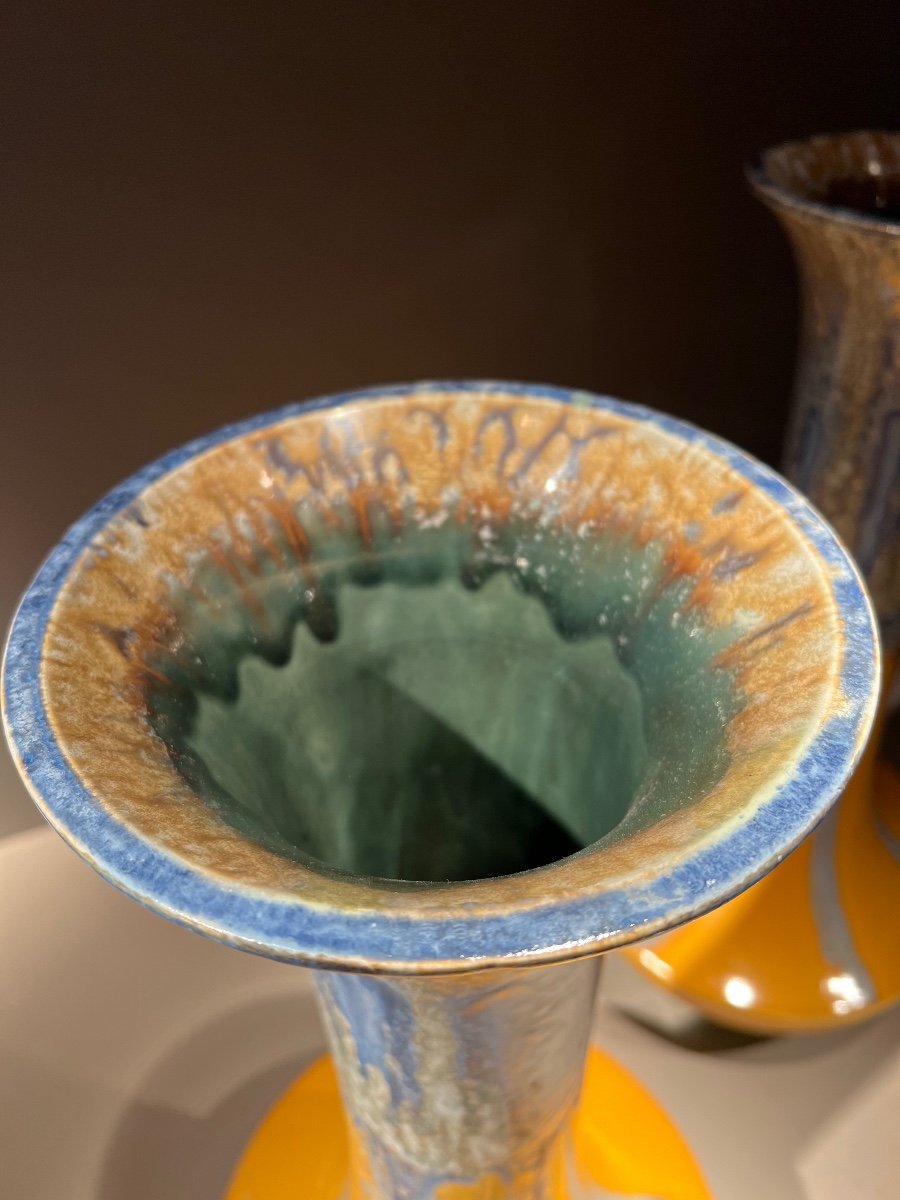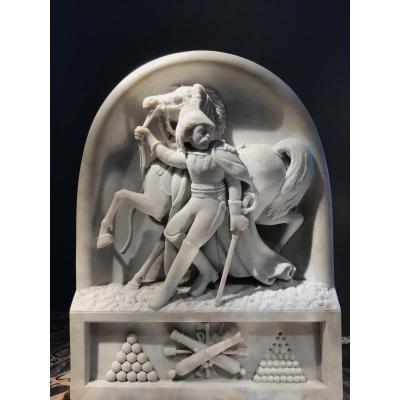1910.
He is the third of the four children of Dionysius De Bruyn known as Denis and Marie Anne Tielens. Gustave was born in Louvain, Belgium along with his three brothers: Émile Martin born July 10, 1831; Jean Antoine Norbert born January 27, 1834; Guillaume Eugène born June 16, 1841 and died in Lille on December 3, 1905. They are all potters and earthenware makers, a profession passed down by their father Denis and their grandfather Martin, himself a potter. Gustave De Bruyn married, in Ghent in Belgium, on October 3, 1860, Marie Weber, with whom he had 12 children. Four of Gustave De Bruyn's children are involved in the operation of the earthenware factory in different positions. Émilie will be the cashier-accountant, Émile the chemist, Adrien the manufacturer and Gustave fils will take care of the production of earthenware. He first settled in Wazemmes in the district known as Petite Belgique, 20 rue Juliers, around 1862, and then moved, in 1864, to Fives-Lille, at no. 2 and 57 rue Malakoff, to carry out his activity as a potter and earthenware. Gustave De Bruyn built a factory at the corner of rue du Maréchal-Mortier (at no. 15) and rue Sainte-Aldegonde in Fives Lille. In 1870, he moved to 22 rue de l'Espérance, a street which adjoins the factory. Gustave De Bruyn filed a patent for invention[2] on January 2, 1885. It is a process for hygienic varnishing of pottery and on this subject, he declared: “the superiority of this varnish is undeniable because it does not contain no mixture of lead oxide. All those in use today contain 50 to 75%. » In 1885, he also manufactured glazed bricks and ceramic tiles. Around 1886, he set up the production of decorative earthenware, which allowed the factory to experience significant growth. Gustave De Bruyn participated in the Universal Exhibition in Paris in 1889 and received a silver medal for his fine earthenware and culinary pottery. It was in 1889 that Gustave De Bruyn took over the Clerc et Taupin factory which produced decorative salt-varnished stoneware. This was located in Allone in the Oise, on the national road to Paris, near Beauvais. The factory has manufacturing workshops, raw material areas and accommodation. Gustave De Bruyn installed a building in the factory for washing soil and raised a hangar for a new workshop upstairs. It was in 1891 that he built a kiln and in 1899 a ceramist from Beauvais, Paul Gréber bought the factory. A new potter joined the family, in fact Gustave De Bruyn married in Lille, on October 8, 1891, his daughter Julienne Amanda known as Valentine to Louis Marie Alfred Van Overstraeten. With his father, he owns the sandstone tile factory Léon De Smet et Cie in the Faubourg de Canteleu. Gustave De Bruyn bought, in 1902, the Stien farm at 54 rue de Lannoy in Fives and the surface area of the factory now represents 13,793 m2. Émile, Adrien and Séraphin Adrien dit Gustave took over from their father upon his death in Lille on August 11, 1916. Adrien named his brother Séraphin Adrien dit Gustave in his will as heir. He died in Lille on June 18, 1944. There were only two brothers (Émile and Séraphin Adrien dit Gustave) left to run the earthenware factory, while Émile was now 78 years old.
The products that leave the factory are almost all recognizable by the interwoven marine anchor of a Det B on the back of each piece; a number can complete this recognition to identify the different series of earthenware produced. There is a very detailed catalog listing all the pieces marketed by Gustave De Bruyn. In the book French potteries and earthenware by Adrien Lesur and Tardy, in the Lille section we can read: “In 1922 the company G. De Bruyn et fils, 22 rue de l'Espérance, registered the pottery brand Vrai plat de Lille , G. De Bruyn and sons…”.










































 Le Magazine de PROANTIC
Le Magazine de PROANTIC TRÉSORS Magazine
TRÉSORS Magazine Rivista Artiquariato
Rivista Artiquariato